Projects undeniably, bring value-adding changes and new solutions to businesses and companies. Completing a project within the set timeline within the given budget and delivering the anticipated results have always been paramount. However, ironically, half of the projects always go through some of the other distress and end up either behind schedule, going beyond the budget - or sometimes, both.
Keeping this in mind, the need for structured project management can never be denied when it is about improving the success rate. Sure, there are plenty of project management methodologies and guidelines that have come into the limelight during the last few years.
However, PRINCE2 has come up as one of the most sought-after project management. It is a methodology that offers well-defined steps that must be followed to complete a project adequately, from the inception to its closure. If you are looking forward to gaining a comprehensive guide to PRINCE2, you have come to the ideal place.
This tutorial will offer you an overview of what exactly is PRINCE2, how it works, and thorough navigation of its primary stages. Along with that, you will also get to be familiar with a few tips to make sure your business accomplishes the stages successfully and effortlessly.
Let's have a look at what we'll be talking about in this Prince2 Tutorial before we get started:
PRINCE2 Tutorial - Table of Contents
- What is PRINCE2?
- Features
- Project Management Methodology
- How is PRINCE2 Used?
- 7 PRINCE2 Processes
- Advantages and Disadvantages
- PRINCE2 Themes
What is PRINCE2?
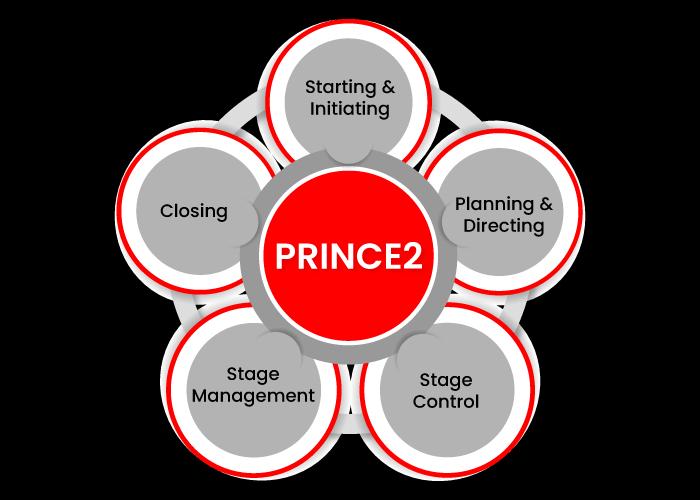
Abbreviated for PRojects IN Controlled Environments, PRINCE2 is a de facto method that is process-based for efficient project management. Used massively by the government of the United Kingdom, it is available in the private and public domains, PRINCE2 method and provides non-proprietorial guidance on project management.
However, the use of PRINCE2 is not restricted to the UK. Instead, it is being accepted and used at its best by international consumers as well, working in both the domains, private and public. Talking about its background, PRINCE2 was established by the Central Computer and Telecommunications Agency (CCTA) in 1989. However, later, this UK company has renamed the Office of Government Commerce (OGC).
PRINCE2 is quite a flexible method that has the essentials for handling successful projects, irrespective of their scale and type. There are seven principles, processes, and themes, and the organization is customized accordingly to meet certain requirements.
| If you want to enrich your career and become a professional in PRINCE2, then visit Mindmajix - a global online training platform: "PRINCE2 Training" This course will help you to achieve excellence in this domain. |
Features of PRINCE2
Defining some of the key features of PRINCE2, you can expect the following things from this project management solution:
- Concentration on the continued justification of the business.
- A defined structure for the management team working on the given project.
- An approach that is based on the product-based planning.
- Focus on dividing the given project into controllable and manageable stages.
- The flexibility that can be put up at an appropriate level of the project.
PRINCE2 offers a structured framework for project management along with a few processes, themes, and principles. As per the framework, the project should have:
- A controlled and organized beginning, i.e., the team should plan and organize before commencing the project
- A controlled and organized middle, i.e., the team should keep projects controlled and organized
- A controlled and organized end, i.e., once the team has got what is required and needed, the project is finished; hence, tidying the loose ends.
PRINCE2 Project Management Methodology
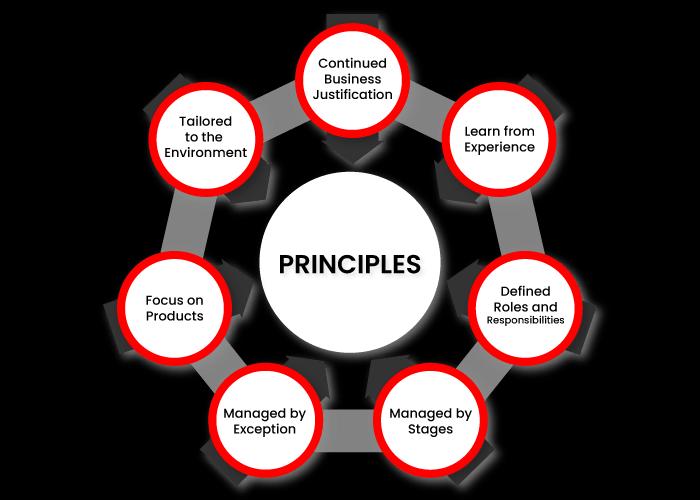
Over the past few years, there have been a variety of positive case studies of such projects that have used the methodology of PRINCE2 project management. The methodology deals with an array of factors that should be managed in every possible project. This diagram, mentioned below, talks about the idea in detail:
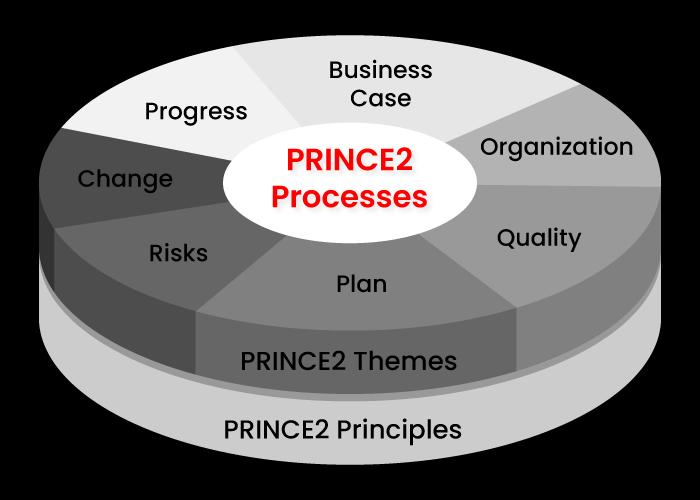
- The seven principles displayed in the above diagram should be applied if the project is using the PRINCE2 methodology. The principles will make you familiar with if and how well the project is being executed using PRINCE2.
- Similarly, the PRINCE2 themes refer to the seven principles that have to be considered throughout the project to make it effective. If adherence to these principles is not done cautiously, there could be a high chance of failure.
- The processes are all about the steps that must be followed. That is the reason why the method is called process-based.
- Lastly, as far as the project’s environment is concerned, it is essential to figure out that the project management method does not turn rigid. Changes and alterations can be done on the basis of the objectives and requirements of the project.
How is PRINCE2 Used?
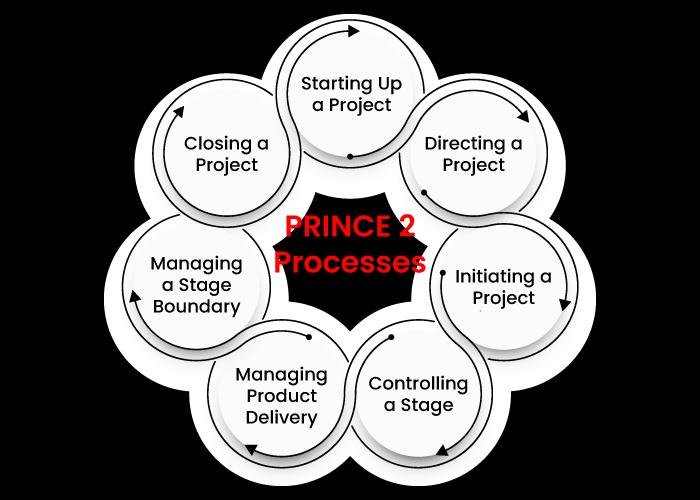
Here is a complete series of processes in a sequence to help you understand how exactly PRINCE2 is used:
1. Beginning a Project
In this first step, a customer submits the request for a new project, generally known as a project mandate. It is then assessed and decided whether the company can take up the project or not. Once it is approved, the customer submits one detailed proposal, stating actions, resources, and other essential information.
2. Project Directing
In this step, the project’s viability is evaluated and assigned to a specific project manager.
3. Initiation of the Project
And then, the project manager comes up with a plan wherein a variety of parameters, like risk, advantages, quality, the time required, cost, and the scope of the project, are covered.
4. The Control Stage
Furthermore, the project gets divided into an array of stages. Post that, the teams are assigned for every stage. The project manager, thereafter, tracks the issues and performance of every stage.
5. Management of Project Delivery
The project manager ensures that there are no gaps between the expected quality and deliverables. The project board makes the final assessment, and then, either the approval is given, or revisions are requested.
6. Management of Stage Boundaries
Towards the closing of every stage, the board and the manager review the results of every stage to make sure that the project is on the correct track.
7. Closure of the Project
With the project closure, results, documentation, and reporting - all of them get closed as well.
[ Check out: Prince2 vs PMP ]
What are the 7 Processes of PRINCE2?
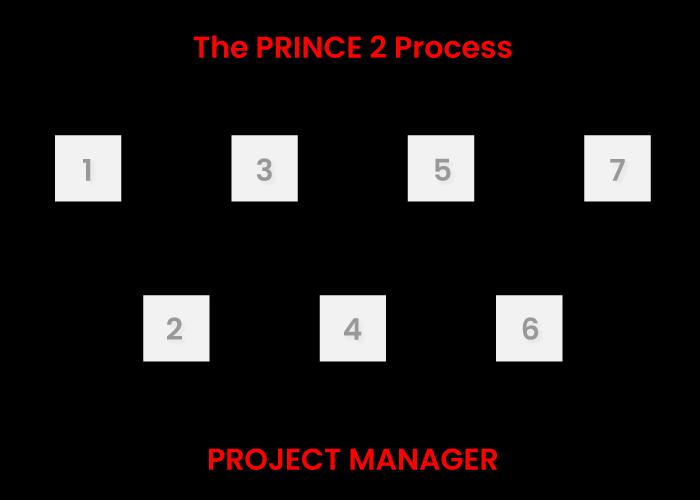
As mentioned above, PRINCE2 uses a process-based methodology that concentrates on control over the complete project, right from the beginning to the end. This means that projects get planned thoroughly before they are commenced. Under this planning, every stage is precisely structured, and all of the loose ends are succinctly tied up once the project is over.
Talking about PRINCE2, it is developed on seven major principles, such as:
1. Projects Should Have Business Justification
Every project should have a clearly stated need, realistic advantages, a defined customer persona, and a comprehensive assessment of the cost.
2. Teams Must Learn From Each Stage
At every step, the lessons are sought as well as recorded in the process. All of these lessons should be used to enhance future projects accordingly.
3. Roles & Responsibilities Should Be Defined Clearly
The third process includes everybody knowing precisely their responsibilities and what their teammates are liable for.
4. Work Gets Planned In Stages
The projects will get broken up into varying work phases. Alongside, periodic reviews will be done to record lessons learned so as to validate that the project is on track to fulfill the requirements.
5. Project Boards Manage By Exception
Considering that the board members are generally senior executives who don’t have enough time to handle the project’s daily activities, they will establish a baseline for requirements, such as scope, risk, and cost. The project manager also has the authority to get the project on track if it is going beyond the set budget, deadline, or more. However, in case any issue is impacting the established requirement, that is considered an exception,,, and the project board comes up with the correct and best way to move ahead.
6. Teams Consistently Stay Focused On Quality
Deliverables are consistently checked against requirements with the help of a quality register.
7. The Approach Is Customised For Every Project
The PRINCE2 method must be adjusted and tailored to suit the requirements of every project, such as the number of people involved, alteration of the planning to fit the project’s size, and more.
[Related Article: Assistant Project Manager Job Description]
Advantages and Disadvantages of PRINCE2
When it comes to evaluating the advantages and disadvantages of PRINCE2, being pressured to make a decision quickly could be an overwhelming experience. Jotted down below are some benefits and drawbacks to consider:
What are the Advantages of PRINCE2?
- One of the significant benefits of using this methodology is the fact that PRINCE2 is product-based and can divide the project into varying stages, making it easier to handle and manage. This ensures that the team stays focused and delivers quality results.
- Another essential advantage is the improved communication between every member of the team as well as between the external stakeholders and the team working on the project. Hence, it offers more control over the procedure. PRINCE2 also provides a chance to stakeholders to give their inputs when it comes to making decisions as they are always informed with the help of periodic reports.
- Furthermore, the entire methodology ensures that the changes are made in the organization to identify any issues or flaws appearing in the project so that they can be rectified right away. Also, the flexibility of this procedure enables such changes to be made in real-time. Though there could be some issues and implications to the schedule, with PRINCE2, you always have some of the best practices that decrease the overall impact.
- Lastly, your team will save loads of time and effort while making the entire project more economical; thus, making sure that you effortlessly cut down the costs.
What are the Disadvantages of PRINCE2?
As far as the disadvantages are concerned, PRINCE2 doesn’t offer subpar flexibility in comparison to other project management solutions and methodologies. Since the demand for project management has grown extensively, you may come across some difficulties while using PRINCE2 for detailed projects.
| Learn Top Prince2 Interview Questions and Answers that help you grab high paying jobs |
What are PRINCE2 Themes?
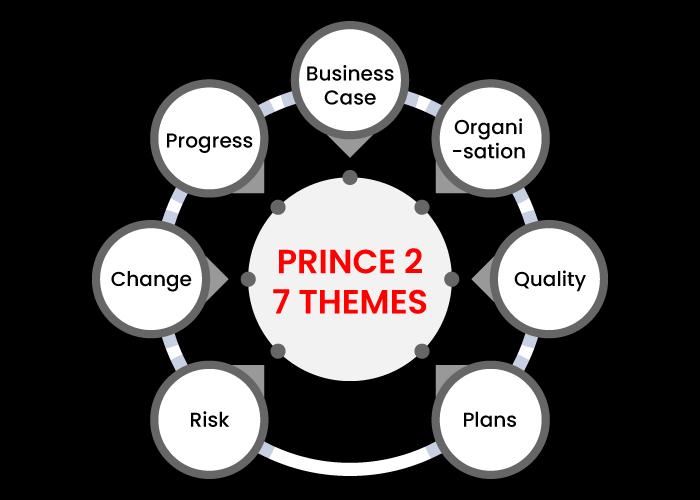
Coming to PRINCE2 themes, here is the list of seven of them:
- Business Case: This theme helps create and maintain a comprehensive record of the business justification to handle the project well.
- Organization: This one is all about defining roles as well as responsibilities for individuals so that they can handle the project according to their own expertise.
- Planning: Under this theme, the steps needed to develop the entire planning and techniques that must be used with the project are clarified and jotted down.
- Progress / Controls: Under this theme, the ongoing performance and viability of the plans are assessed. Along with that, whether the project should proceed ahead or stop for a while is also decided.
- Quality: With quality, the intention here is to discover quality requirements as well as measures to find out how the project is going to deliver both these factors.
- Risk: The risk theme helps the project team to effectively discover opportunities and risks that have the potential to hinder the progress of the project.
- Change: With the change, how the project manager is going to evaluate the project and act accordingly to initiate the changes is taken care of.
[ Also Check out Prince2 vs Agile ]
Conclusion
Although PRINCE2 offers plenty of advantages, it should also be regarded that it is a complex method and would be difficult to carry out by novices. If you fail to understand its precise methodologies, you may have to face plenty of difficulties and problems when executing projects. Also, the guidelines of PRINCE2 can be applied selectively to specific projects that don’t last long. This, in a way, makes this method more flexible and appealing to dynamic projects and companies. So, before you implement PRINCE2 into your organization, make sure you are wary of its features, components, and how it works to generate the best possible result.
If you have any queries, let me know in the comment section below.
 On-Job Support Service
On-Job Support Service
Online Work Support for your on-job roles.

Our work-support plans provide precise options as per your project tasks. Whether you are a newbie or an experienced professional seeking assistance in completing project tasks, we are here with the following plans to meet your custom needs:
- Pay Per Hour
- Pay Per Week
- Monthly
| Name | Dates | |
|---|---|---|
| PRINCE2 Training | Dec 30 to Jan 14 | View Details |
| PRINCE2 Training | Jan 03 to Jan 18 | View Details |
| PRINCE2 Training | Jan 06 to Jan 21 | View Details |
| PRINCE2 Training | Jan 10 to Jan 25 | View Details |

Madhuri is a Senior Content Creator at MindMajix. She has written about a range of different topics on various technologies, which include, Splunk, Tensorflow, Selenium, and CEH. She spends most of her time researching on technology, and startups. Connect with her via LinkedIn and Twitter .














